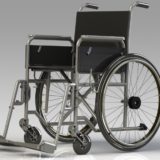
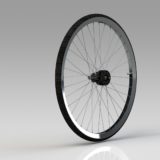
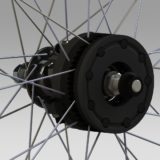
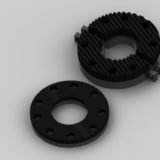
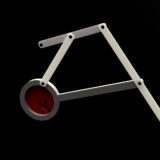







With a focus towards giving patients control over their own rehabilitation, designed a wheelchair attachment that replicated Continuous Passive Motion (CPM) therapy. CPM therapy is usually performed on traumatised joints for long durations in controlled hospital environments. Most CPM devices merely move a patient’s joint through a prescribed range of motion, which isn’t so kinematically complex that it cannot be actuated by the patent themselves.
Thus, this therapeutic device was deigned to achieve the same rehabilitation goals as CPM devices; to reduce seat sores and muscle atrophy, as well as provide mild nerve stimulation. By developing it as a wheelchair attachment, the rotational movement of the wheels could be used to provide prescribed flexion motion to the knees of a patient. The patient’s legs would ‘cycle’ on an offset axis of rotation, and flexion/extension would be experienced in the hips and knees.
Designed to be manufactured with cheap polymers and meant to last a life cycle of 3 years, this device’s ultimate goal was meant to reduce patients’ reliance on nurse-aided therapy, and allow them to independently stimulate their own joints outside a hospital environment.
Share your thoughts